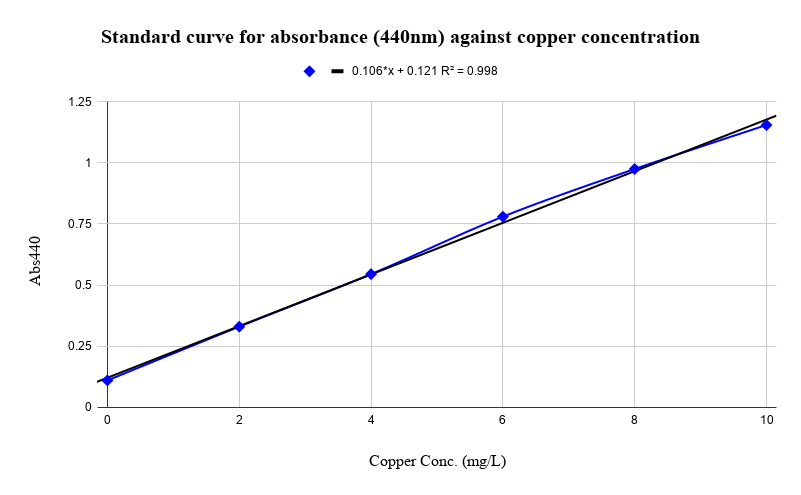Part:BBa_K3076150
Coding sequence of metallothioneins (MT) gene from Corynebacterium glutamicum
Metallothioneins (MT) are proteins made of 61-68 amino acids with a small molecular weight. It is found in almost every known organism, from bacteria to humans. Due to this ubiquity, it minimizes the gene toxicity effect when we choose it as the ectopic expression target.
MT contains many cysteine groups which were reported to be responsible for chelating a wide range of metal ions such as cadmium, lead, copper, and mercury, etc. Nevertheless, MT from different species showed different affinity towards different metal ions.
Literature reported that MT protein from Corynebacterium glutamicum (CgMT) shows strong binding affinity towards divalent cations, such as Zn2+ and Pb2+. [1] Since our project used Cu2+ as a model for the metal pollutants, we decided to explore the plausibility of using CgMT to increase the metal accumulation ability of E. coli.
This part was synthesized into pET151/TOPO vector for the ectopic expression in E. coli BL21. The results showed that the CgMT transformant absorbed significantly more copper ions (~15%) in the culture medium when compared with non-induced control and empty vector control.
Copper removal assay
The E. coli expressing CgMT was put into copper (II) sulphate-containing medium. The concentration of copper ions in the medium was measured at different time points. API copper testing reagent was used in this assay. The reagent reacts with copper ions and forms brown colour precipitate. We used a colourimeter to measure the absorbance (440nm) of the reagent mixture and calculate the concentration of copper ion by a standard curve.

We found that when compared with no IPTG induction control group and empty vector control group, the CgMT gene -expressing group removed significantly more copper ions inside the medium after 4 hours of incubation. This result indicates CgMT gene expression can effectively increase the copper absorption ability of E. coli and it serves the aim of our project which we tried to increase the metal pollutant removal ability of E. coli.
Future work
In this project, we also studied the effect of knocking out copper exporters in E. coli to see if the copper absorption in the organism will be increased. We found that by knocking out cusF gene, the KO strain significantly removed more copper in the medium when compared with the control group. (BBa K3076500) Thus, in the next step, we will combine two modifications together to see if it can further improve our metaL pollutant removal system.
References
[1] Jafarian, V., & Ghaffari, F. (2017). A unique metallothionein-engineered in Escherichia coli for biosorption of lead, zinc, and cadmium; absorption or adsorption? Microbiology, 86(1), 73–81. doi: 10.1134/s0026261717010064
Sequence and Features
- 10COMPATIBLE WITH RFC[10]
- 12INCOMPATIBLE WITH RFC[12]Illegal NheI site found at 395
- 21COMPATIBLE WITH RFC[21]
- 23COMPATIBLE WITH RFC[23]
- 25COMPATIBLE WITH RFC[25]
- 1000COMPATIBLE WITH RFC[1000]
| None |

